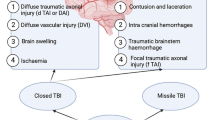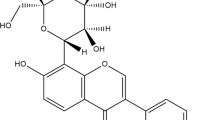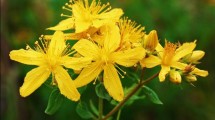Abstract
Objective
To study the effects and possible mechanisms of effective composite of Naodesheng (脑得生, NDS) on permanent cerebral ischemia-induced injury in rats.
Methods
Male Sprague-Dawley rats: with middle cerebral artery occlusion (MCAO) were established with the modified suture method, and they were randomly divided into the following groups: the sham-operated group, the model group, the Nimodipine group (0.012 g/kg), the NDS group (1.075 g/kg), the total extracts group (0.23 g/kg), the high-dose NEC group (0.07 g/kg), the middle-dose NEC group (0.02 g/kg), and the low-dose NEC group (0.007 g/kg). The aforesaid medicines were administered at the 2nd, 4th, and 24th h after focal cerebral ischemia, and the infarction size and water content in the brain were evaluated at the 26th h after MCAO. Then, after oral administration once daily for 7 successive days, the changes in the degree of neurological deficit, oxidative stress, and apoptosis were measured on the 7th day.
Results
NEC could significantly reduce the infarction size after focal cerebral ischemia, and slightly relieve water content in the brain, significantly alleviate neurological function impairment, increase the levels of superoxide dismutase (SOD) and adenosine triphosphate enzyme (ATPase) activity, and decrease the content of malondialdehyde (MDA). NEC could also extenuate Bax and caspase-3 expression in the hippocampus tissue of the ischemic region. As compared with the three NEC treated groups, the high-dose NEC showed better efficacy.
Conclusions
NEC could significantly reduce brain injury induced by ischemia;: its mechanism was closely associated with hindering oxidative stress and apoptosis. The effective composite-compositeguided methodology is a feasible tool to improve the neuro-protective properties of the Chinese medicine guided prescription NDS against focal cerebral ischemia in rats.
Similar content being viewed by others
References
Zhang AL, Chen FM, Zhang HY, Ni W. “Naode Sheng” for cerebral infarction in 30 cases. Shanghai J Tradit Chin Med (Chin) 2002;3:18–19.
Zhang YS. Clinical observation of Naodesheng on 66 cases with cerebral infarction. J Practl Med (Chin) 2007;23:3107.
Wang YH, Du GH. Effect of the group of effective components of Chinese medical prescription-Xiaoxuming Decoction on aging rats. Chin Tradit Patent Med (Chin) 2006;27:67–71.
Wang YH, Du GH. Effective components combination of Xiaoxuming Decotion on anti-Alzheimer’s disease. Chin Tradit Patent Med (Chin) 2005;27:993–996.
Du GH. Overview of effetive compounds group formulation in traditional Chinese medical prescription. Chin Tradit Patent Med (Chin) 2002;24:878–880.
Zhang L, Cheng XR, Du GH. A new methodology that improves the neuroprotective proterties of the traditional Chinese medicine prescription, Nao-de-sheng. Asian J Tradit Med 2007;2:212–217.
Yang Y, Li Q, Miyashita H, Howlett W, Siddiqui M, Shuaib A. Usefulness of postischemic thrombolysis with or without neuroprotection in a focal embolic model of cerebral ischemia. J Neurosurg 2009;92:841–847.
Nagai N, De Mol M, Van HB, Verstreken M, Collen D. Depletion of circulating α2-antiplasmin by intravenous plasmin or immunoneutralization reduces focal cerebral ischemic injury in the absence of arterial recanalization. Blood 2001;97:3086–3092.
Bederson JB, Pitts LH, Germano SM, Nishimura MC, Davis RL, Bartkowshi HM. Evaluation of 2,3,5-triphenyltet razlium chloride as a stain for detection and quantification of experimental cerebral infarction in rats. Stroke 1986;17:1304–1308.
Yang Y, Shuaib A, Li Q. Quantification of infarct size on focal cerebral ischemia model of rats using a simple and economical method. J Neurosci Meth 1998;84:9–16.
Bederson JB, Pitts LH, Tsuji M, Nishimura MC, Davis RL, Bartkowski HM. Rat middle cerebral artery occlusion: evaluation of the model and development of a neurologic examination. Stroke 1986;17:472–476.
Andrabi SA, Spina MG, Lorenz P, Ebmeyer U, Wolf G, Horn TF. Oxyresveratrol (trans-2,3′,4,5′-tetrahydroxystilbene) is neuroprotective and inhibits the apoptotic cell death in transient cerebral ischemia. Brain Res 2004;1017:98–107.
Guan QH, Pei DS, Zhang QG, Hao ZB, Xu TL, Zhang GY. The neuroprotective action of SP600125, a new inhibitor of JNK, on transient brain ischemia/reperfusion-induced neuronal death in rat hippocampal CA1 via nuclear and non-nuclear pathways. Brain Res 2005;1035:51–59.
Wu C, Fujihara H, Yao J, Qi S, Shimoji K, Baba H. Different expression patterns of Bcl-2, Bcl-xl, and Bax proteins after sublethal forebrain ischemia in C57Black/Crj6 mouse striatum. Stroke 2003;34:1803–1808.
Belayev L, Alonso OF, Busto R, Zhao W, GinSberg MD. Midlle cerebral artery occlusion in the rat by intraluminal suture, neurological and pathological evaluation of an improved model. Stroke 1996;27:1616–1622.
Mattson MP, Culmsee C, Yu ZF. Apoptotic and antiapoptotic mechanisms in stroke. Cell Tissue Res 2000;301:173–87.
Chen J, Graham SH, Nakayama M, Zhu RL, Jinn K, Stetler RA, et al. Apoptosis repressor genes Bcl-2 and Bcl-x-long are expressed in the rat brain following global ischemia. J Cereb Blood Flow Metab 1997;17:2–10.
Kuan CY, Whitmarsh AJ, Yang DD, Liao G, Schloemer AJ, Dong C, Bao J, et al. A critical role of neuralspecific JNK3 for ischemic apoptosis. Proc Natl Acad Sci 2003;100:15184–15189.
Hayashi T, Sakurai M, Itoyama Y, Abe K. Oxidative damage and breakage of DNA in rat brain after transient MCA occlusion. Brain Res 1999;832:159–163.
Chan PH. Role of oxidants in ischemic brain damage. Stroke 1996;27:1124–1129.
Author information
Authors and Affiliations
Corresponding author
Additional information
Supported by Chinese Herbs Special Project of State Administration of Traditional Chinese Medicine (No. 02-03-ZP08); National High Technology Research and Development Program of China, the Fund of Research and Application of Screening Technology Platform of Innovative Drug (863 Program, No. 2004AA2Z3782)
Rights and permissions
About this article
Cite this article
Zhang, L., Cheng, Xr., Chen, Ry. et al. Protective effect of effective composite of Chinese medicine prescription Naodesheng (脑得生) against focal cerebral ischemia in rats. Chin. J. Integr. Med. 15, 377–383 (2009). https://doi.org/10.1007/s11655-009-0377-4
Received:
Published:
Issue Date:
DOI: https://doi.org/10.1007/s11655-009-0377-4




